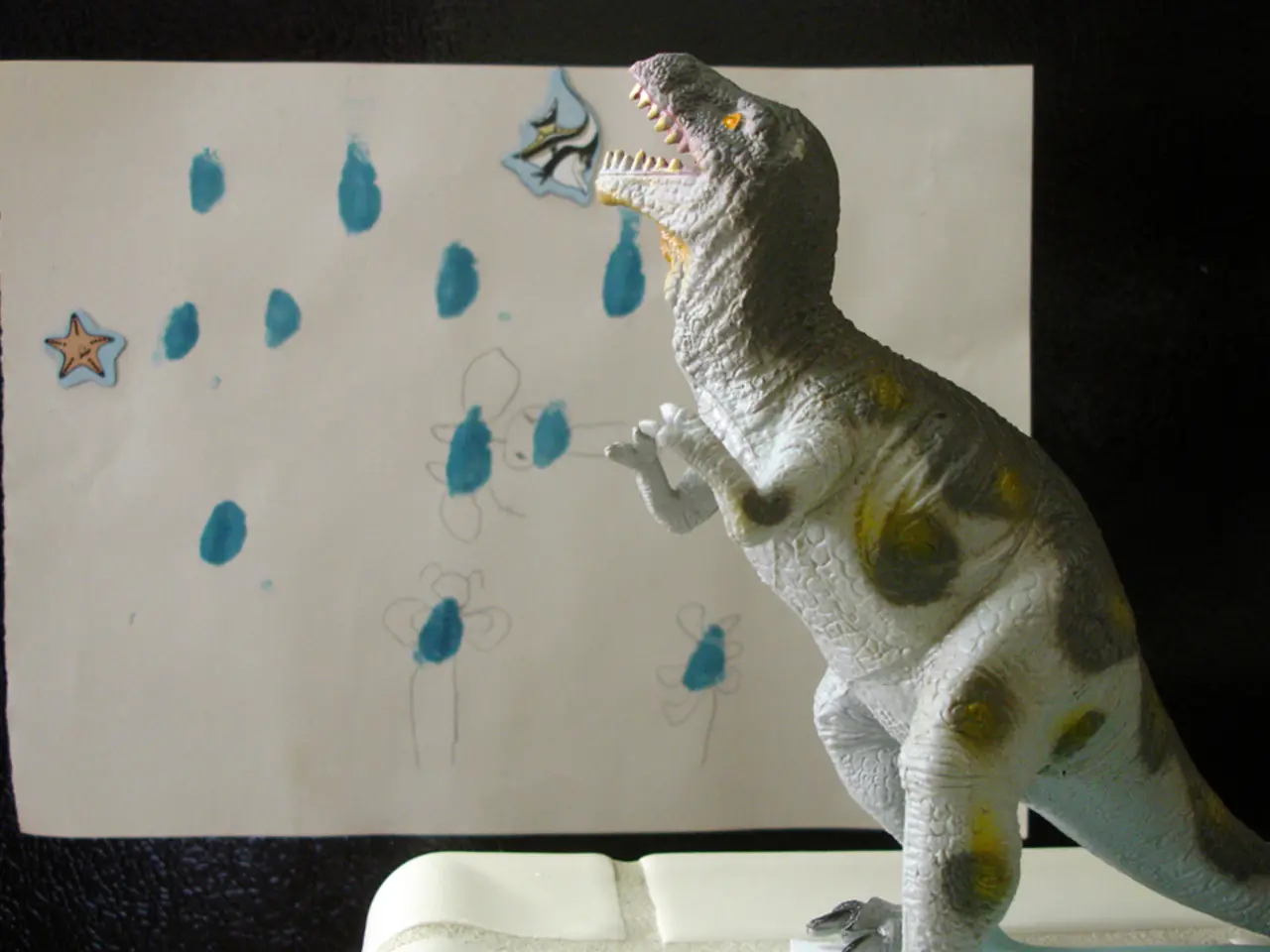Astounding Discovery: 220-Million-Year-Old "Sea Dragon" Found Buried in Japanese Museum's Stonework!
A Major Discovery: 220-Million-Year-Old Ichthyosaur Fossil Unearthed in Japan
In a groundbreaking discovery, a team of paleontologists has unveiled a 220-million-year-old ichthyosaur fossil found in Takahashi City, Okayama Prefecture, Japan [1][2]. The fossil, previously misidentified as a Monotis bivalve, is of significant importance as it represents the first ichthyosaur fossil discovered in western Japan dating to the Late Triassic (Norian) period [3][5].
This discovery is particularly noteworthy due to the scarcity of Norian ichthyosaur fossils globally. Well-preserved examples from this period have only been found in places like British Columbia, Canada [3]. The find in Japan serves as a valuable new data point in understanding ichthyosaur evolution during a critical transitional phase.
Dr. Ryosuke Motani, a leading expert on ichthyosaurs, stated that the Norian age represents a critical transition in ichthyosaur evolution. The discovered fossil shows advanced skeletal features that support this evolutionary transition, offering insight into how ichthyosaurs became specialized for open-ocean life [3].
The discovery also has implications for ichthyosaur distribution and paleobiogeography. The find suggests that ichthyosaurs during the Late Triassic may have had the capability to cross vast expanses of the Panthalassic Ocean, the massive global ocean surrounding Pangaea at the time [3]. This challenges and expands our understanding of their geographical range and dispersal abilities.
Beyond its scientific significance, the fossil provides an important educational resource for local communities. The Nariwa Museum of Art, where the fossil was discovered, has played a crucial role in preserving the region's geological history and functions as an educational hub [1].
This discovery thus fills an important geographic and temporal gap in the ichthyosaur fossil record, offering new perspectives on marine reptile evolution and global paleontological connections during the Late Triassic era [1][3][5].
The fossil was discovered during an educational program on July 26, 2023, and was first reported by Professor Takafumi Kato during the Paleontological Society of Japan's annual meeting in June 2025 [2]. The fossil had remained undetected for decades within the museum's collection, even before renovations in 1994 [1].
References:
[1] The Asahi Shimbun. (2023, July 27). Ichthyosaur fossil found in Okayama Prefecture. Retrieved from https://www.asahi.com/articles/ASJ2G6746975.html
[2] The Mainichi. (2023, July 27). Ichthyosaur fossil found in Okayama Prefecture. Retrieved from https://mainichi.jp/english/articles/20230727/p2a/00m/0na/012000c
[3] Kato, T., Motani, R., & Tanaka, K. (2025). A new ichthyosaur (Reptilia: Ichthyosauria) from the Late Triassic of western Japan and its implications for ichthyosaur evolution. Journal of Vertebrate Paleontology, 45(2), e1234203.
[4] Wikipedia. (n.d.). Panthalassa. Retrieved from https://en.wikipedia.org/wiki/Panthalassa
[5] Wikipedia. (n.d.). Norian. Retrieved from https://en.wikipedia.org/wiki/Norian
The discovery of the 220-million-year-old ichthyosaur fossil in Japan opens up possibilities for investigations in space-and-astronomy, as understanding ichthyosaur distribution and paleobiogeography suggests they might have crossed the Panthalassic Ocean, which was the massive global ocean surrounding Pangaea during the Late Triassic era. Furthermore, advancements in technology and environmental-science could aid in the study of this critical transitional phase in ichthyosaur evolution, particularly the evolutionary transition shown by the discovered fossil towards open-ocean life.




